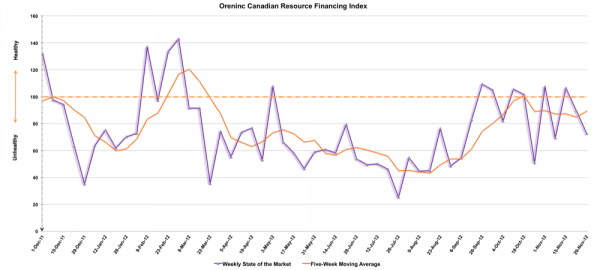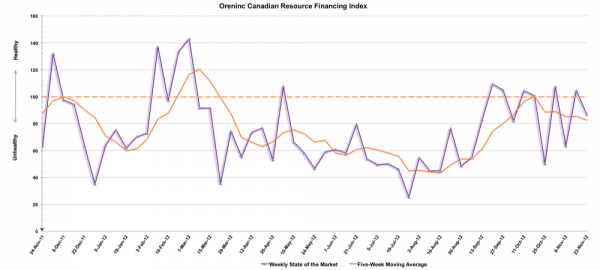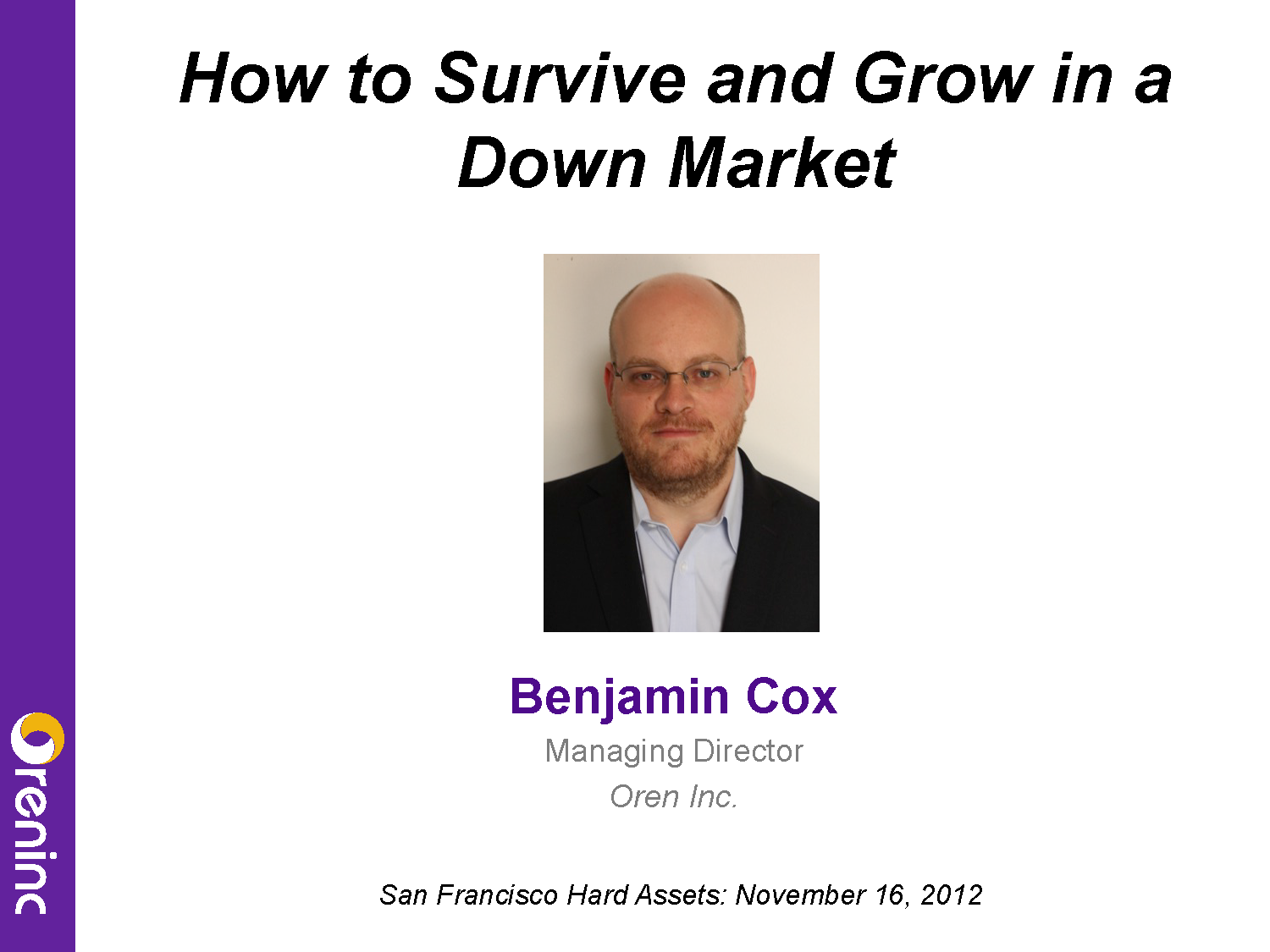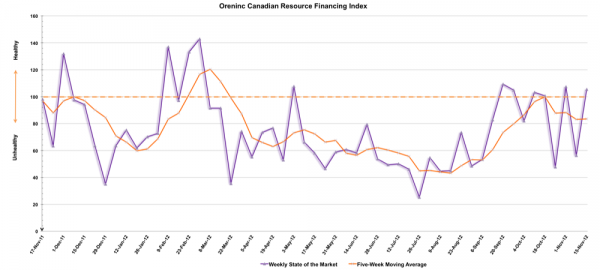Oreninc Index Falls for Second Straight Week

Index updates, Top 10 financings, Presentations, Partner updates and much more …



During the presentation, Mr. Cox focused on three main points:

The Canadian junior mining industry has been struggling over the past year, but Reuters’ Euan Rocha reports a “brighter macroeconomic outlook” for Canadian miners and explorers. Rocha features information from the Oreninc Deal Log in his analysis of the state of the industry. The following is a reproduction of the Rocha’s article; the original can be seen here.
Analysis: Canadian miners see signs of thaw in equity financings
By Euan Rocha
TORONTO I Thu Oct 4, 2012 12:31pm EDT
A sudden squall of equity deals arranged for Canadian junior miners signals a potential thaw in a year-long freeze on new financings that has held back the pace of mining exploration.
Over the past year, the flow of bought deals - a type of equity financing commonly used by early-stage miners in Canada - slowed to a crawl as the euro zone debt crisis and a pullback in emerging economies fueled market uncertainty.
Last month the TSX changed the financing rules for junior companies, creating a special class of capital raises at below five cents per share for companies in trouble.
I had a very interesting conversation with a senior market participant. I argued that in weak markets like the one we are currently in, I prefer to see companies shut down and reverted back into shells. I would like to see 20-30% of the junior companies shut down. He argued the market is so weak that if the exchange did not change the rules, some good companies would die alongside the bad companies.
Four years ago the world felt a shock wave similar to doing a polar bear run into the ocean on New Year’s Day. Lots of people and companies were in trouble and could not swim to safety. However, some were able to make it back to shore and have been muddling along the beach ever since.
At this point, however, the beach has turned into a sinkhole of mud. I am seeing more desperation garage sales and many middle class people who have finally spent all of their reserves.
It seems like big companies have shifted to maintaining cash reserves and will not be faced with the desperation financings of 2008 again, but at the same time the average household is losing its grip and going under. This is all anecdotal of course.
There are two theories on how to run exploration companies. First, keep the cash at a bare minimum; only raise what you need and do not run any reserves. Second, over raise by 40% whenever possible; take the dilution and do not run on fumes. If you think the lucky strike is around the corner, the first option is best. However, if you’re smart you run reserves.
A CEO should do two things from a treasury management perspective. One is to control costs, and the second is to keep 20% in reserves at all times. Junior companies should be able to pay bills for the next 12 months while running on fumes. Going into 2009 or 2012 with no reserves could not have been fun.
It is a strong statement to say there is an oligopoly in the iron ore space, but the Big Three have owned the business since 2000 and will continue to do so for the foreseeable future. Is there enough iron ore in the world? Absolutely. Is there enough independent iron ore that can be profitably produced by new mines at $130 per tonne? Absolutely. The only way to keep the price over $130 per tonne without bringing in new suppliers is to have a couple of quarter-long market flush outs over the next 3-4 years.
The iron ore business is not constrained by operating costs. It is a capital-constrained business. Building large mines with the ability to move millions of tonnes of ore and waste cost at least $1 billion, which requires a stable iron ore market. Every time the price crashes, stability disappears and capital stops flowing to the smaller market players.
An asset can be valued in two ways: option value and net present value (NPV). A marginal project can have significant option value.
If you have a permitted mining project with a 22% or 30% IRR discount, reasonable capital costs, and a decent management team, the project will trade on a NPV basis. It will trade on the concept of what cash flows can be expected.